High Quality Pt–Pt Metal Bonding for High Temperature Packaging
Abstract
1. Introduction
2. Materials and Methods
2.1. Test Sample Design
2.2. Substrate Fabrication
2.3. Pt-Pt Thermocompression Bonding
3. Results and Discussion
3.1. Interfacial Analysis
3.2. Shear Strength Analysis
3.3. Hermeticity Detection
3.4. Failure Analysis
4. Conclusions
Author Contributions
Funding
Data Availability Statement
Acknowledgments
Conflicts of Interest
References
- Ghosh, S.; Nika, D.L.; Pokatilov, E.P.; Balandin, A. Heat conduction in graphene: Experimental study and theoretical interpretation. New J. Phys. 2009, 11, 095012. [Google Scholar] [CrossRef]
- Wang, L.; Meric, I.; Huang, P.Y.; Gao, Q.; Gao, Y.; Tran, H.; Taniguchi, T.; Watanabe, K.; Campos, L.M.; Muller, D.A.; et al. One-dimensional electrical contact to a two-dimensional material. Science 2013, 342, 614–617. [Google Scholar] [CrossRef]
- Yin, Y.; Cheng, Z.; Wang, L.; Jin, K.; Wang, W. Graphene, a material for high temperature devices–intrinsic carrier density, carrier drift velocity and lattice energy. Sci. Rep. 2014, 4, 1–6. [Google Scholar] [CrossRef] [PubMed]
- Burla, R.K.; Chen, L.; Zorman, C.A.; Mehregany, M. Development of nickel wire bonding for high-temperature packaging of SiC devices. IEEE Trans. Adv. Packag. 2009, 32, 564–574. [Google Scholar] [CrossRef]
- Brachmann, E.; Seifert, M.; Ernst, D.; Menzel, S.B.; Gemming, T. Pt-wire bonding optimization for electroplated Pt films on γ-Al2O3 for high temperature and harsh environment applications. Sens. Actuators A Phys. 2018, 284, 129–134. [Google Scholar] [CrossRef]
- Kang, S.K.; Gruber, P.; Shih, D.Y. An overview of Pb-free, flip-chip wafer-bumping technologies. JOM 2008, 60, 66–70. [Google Scholar] [CrossRef]
- Wun, J.; Lai, C.; Chen, N.; Bowers, J.E.; Shi, J.-W. Flip-Chip Bonding Packaged THz Photodiode with Broadband High-Power Performance. Photonics Technol. Lett. IEEE 2014, 26, 2462–2464. [Google Scholar] [CrossRef]
- Wang, P.J.; Lee, C.C. Silver flip-chip technology by solid-state bonding. J. Electron. Packag. 2010, 132, 035001. [Google Scholar] [CrossRef]
- Shimatsu, T.; Uomoto, M. Atomic diffusion bonding of wafers with thin nanocrystalline metal films. J. Vac. Sci. Technol. B Nanotechnol. Microelectron. Mater. Process. Meas. Phenom. 2010, 28, 706–714. [Google Scholar] [CrossRef]
- Kim, T.H.; Howlader, M.; Itoh, T.; Suga, T. Room temperature Cu–Cu direct bonding using surface activated bonding method. J. Vac. Sci. Technol. A Vac. Surf. Film. 2003, 21, 449–453. [Google Scholar] [CrossRef]
- Shimbo, M.; Furukawa, K.; Fukuda, K.; Tanzawa, K. Silicon-to-silicon direct bonding method. J. Appl. Phys. 1986, 60, 2987–2989. [Google Scholar] [CrossRef]
- Maszara, W.P.; Goetz, G.; Caviglia, A.; McKitterick, J.B. Bonding of silicon wafers for silicon-on-insulator. J. Appl. Phys. 1988, 64, 4943–4950. [Google Scholar] [CrossRef]
- Ye, Z. Sensor/ROIC integration using oxide bonding. In Proceedings of the 2008 International Linear Collider Workshop (LCWS08 and ILC08), Chicago, IL, USA, 16–20 November 2008. [Google Scholar]
- Enquist, P.; Fountain, G.; Petteway, C.; Hollingsworth, A.; Grady, H. Low cost of ownership scalable copper direct bond interconnect 3D IC technology for three dimensional integrated circuit applications. In Proceedings of the 2009 IEEE International Conference on 3D System Integration, San Francisco, CA, USA, 28–30 September 2009. [Google Scholar]
- Lin, H.; Stevenson, J.T.M.; Gundlach, A.M.; Dunare, C.C.; Walton, A.J. Direct Al–Al contact using low temperature wafer bonding for integrating MEMS and CMOS devices. Microelectron. Eng. 2008, 85, 1059–1061. [Google Scholar] [CrossRef]
- Hao, F.; Wang, J.; Li, M. Low-Temperature Anodic Bonding for Wafer-Level Al–Al Interconnection in MEMS Grating Gyroscope. IEEE Trans. Compon. Packag. Manuf. Technol. 2021, 11, 19–24. [Google Scholar] [CrossRef]
- Mersinligil, M.; Desset, J.; Brouckaert, J.F. High-temperature high-frequency turbine exit flow field measurements in a military engine with a cooled unsteady total pressure probe. Proc. Inst. Mech. Eng. Part A J. Power Energy 2011, 225, 954–963. [Google Scholar] [CrossRef]
- Yamawaki, S. Verifying heat transfer analysis of high pressure cooled turbine blades and disk. Ann. N. Y. Acad. Sci. 2001, 934, 505–512. [Google Scholar] [CrossRef]
- Yang, Y.; Yang, J.; Fang, D. Research progress on thermal protection materials and structures of hypersonic vehicles. Appl. Math. Mech. 2008, 29, 51–60. [Google Scholar] [CrossRef]
- Seifert, M.; Brachmann, E.; Rane, G.K.; Menzel, S.B.; Oswald, S.; Gemming, T. Pt-RuAl bilayers as a model system for Pt wire bonding of high-temperature RuAl electrodes. J. Alloys. Compd. 2019, 29, 393–398. [Google Scholar] [CrossRef]
- Trumić, B.; Gomidželović, L.; Marjanović, S.; Ivanović, A.; Krstić, V. Pt-based alloys: Investigation of the effect of impurities content on creep rate, rupture time and relative elongation at high temperatures. Mater. Res. 2016, 20, 191–199. [Google Scholar] [CrossRef][Green Version]
- Wang, J.; Wang, Q.; Liu, Z.; Wu, Z.; Cai, J.; Wang, D. Activation of electroplated-Cu surface via plasma pretreatment for low temperature Cu-Sn bonding in 3D interconnection. Appl. Surf. Sci. 2016, 384, 200–206. [Google Scholar] [CrossRef]
- Hu, X.; Xu, T.; Keer, L.M.; Li, Y.; Jiang, X. Microstructure evolution and shear fracture behavior of aged Sn3Ag0. 5Cu/Cu solder joints. Mater. Sci. Eng. A 2016, 673, 167–177. [Google Scholar] [CrossRef]
- Hu, X.; Xu, T.; Keer, L.M.; Li, Y.; Jiang, X. Shear strength and fracture behavior of reflowed Sn3.0Ag0.5Cu/Cu solder joints under various strain rates. J. Alloys. Compd. 2017, 690, 720–729. [Google Scholar] [CrossRef]
- Bi, X.; Hu, X.; Li, Q. Effect of Co addition into Ni film on shear strength of solder/Ni/Cu system: Experimental and theoretical investigations. Mater. Sci. Eng. A 2020, 788, 139589. [Google Scholar] [CrossRef]
- Wang, H.; Hu, X.; Jiang, X. Effects of Ni modified MWCNTs on the microstructural evolution and shear strength of Sn-3.0Ag-0.5Cu composite solder joints. Mater. Charact. 2020, 163, 110287. [Google Scholar] [CrossRef]
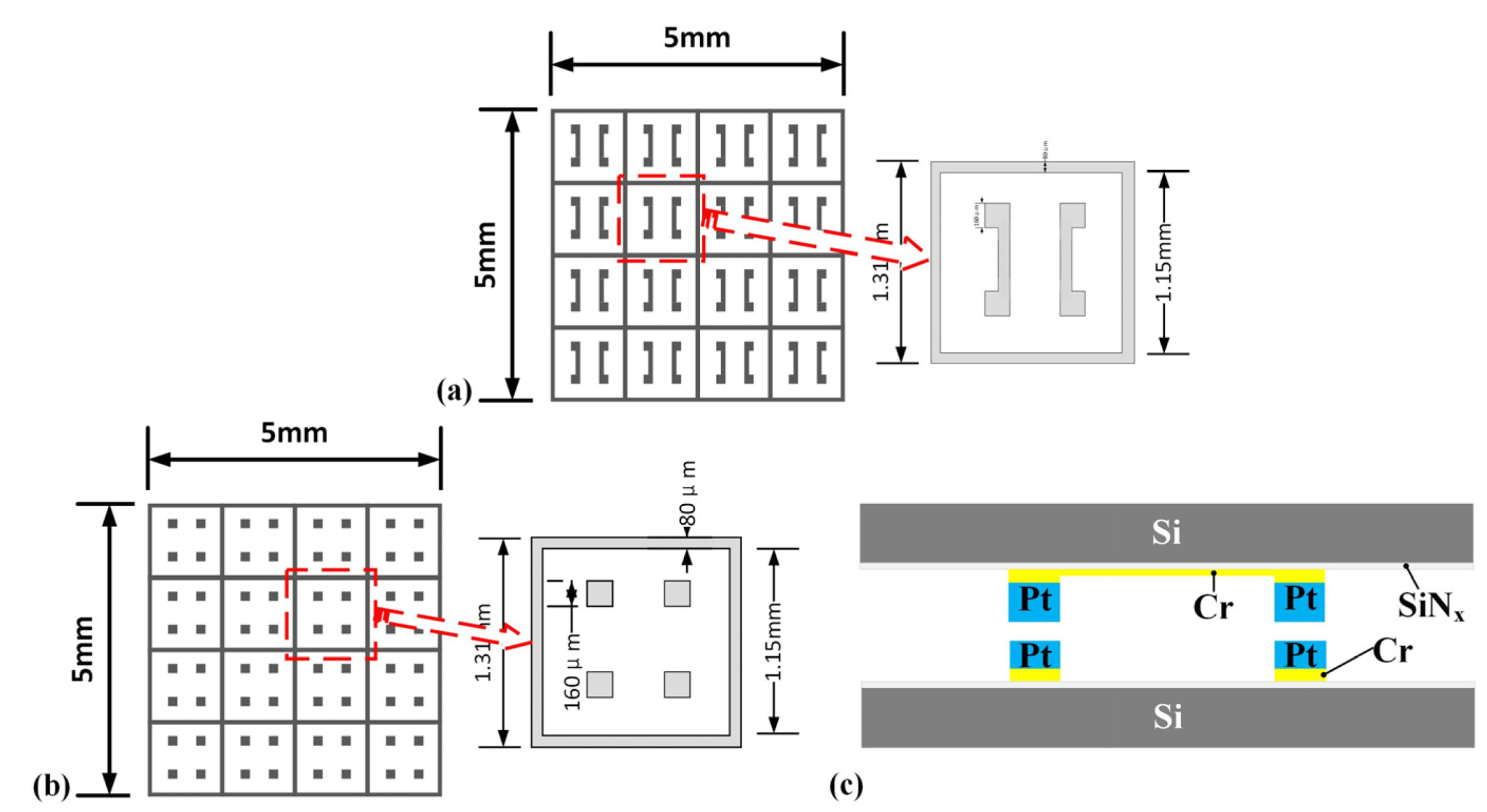
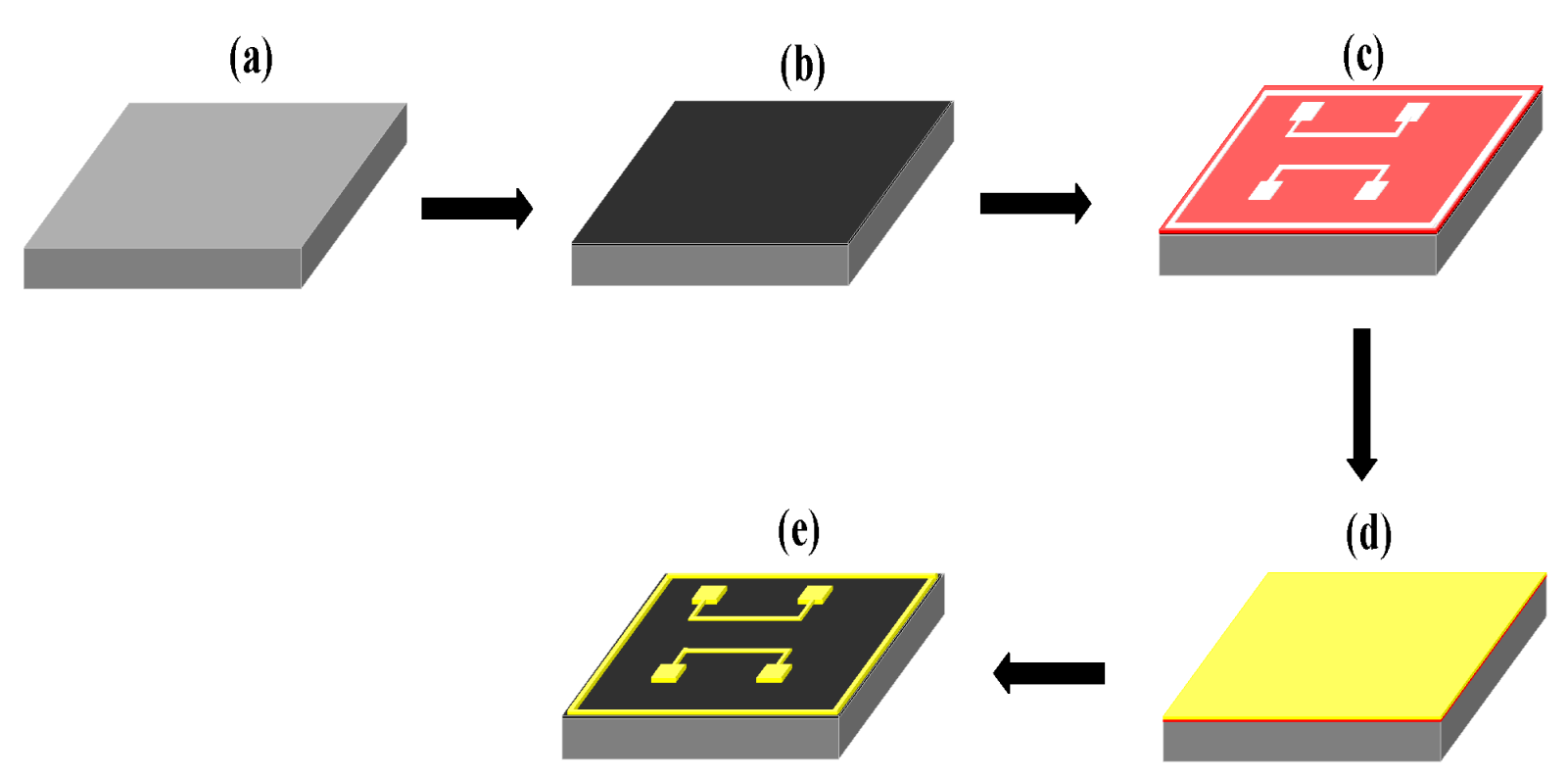
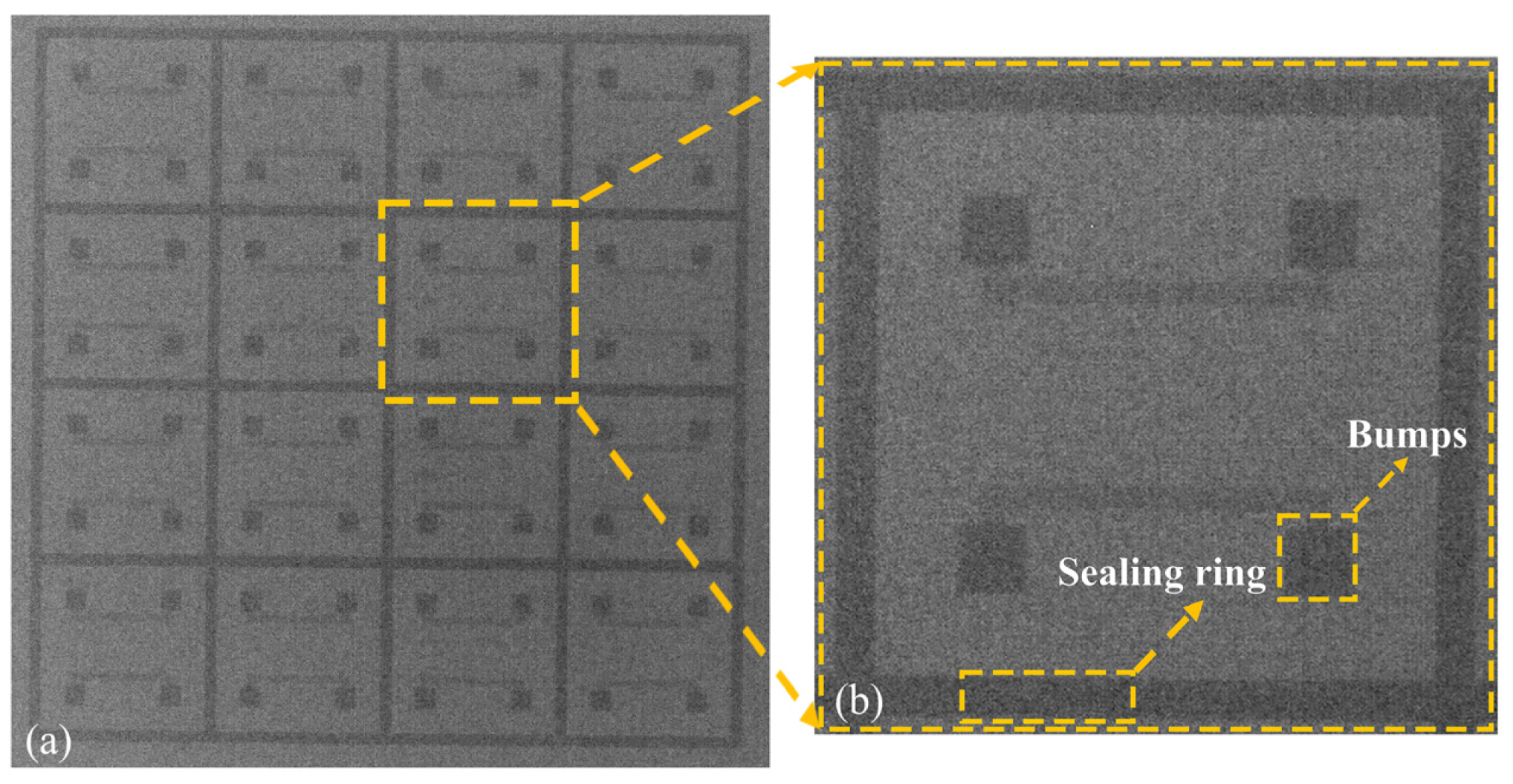
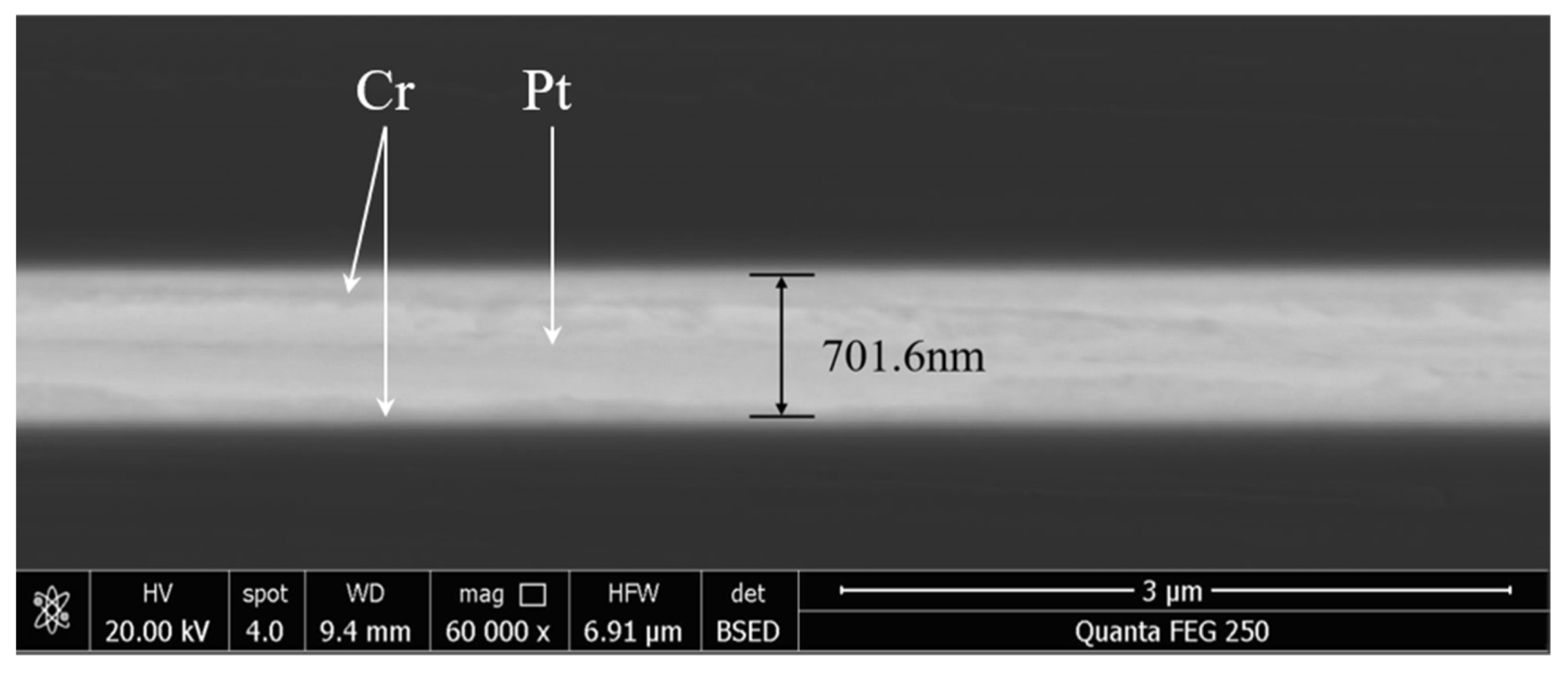
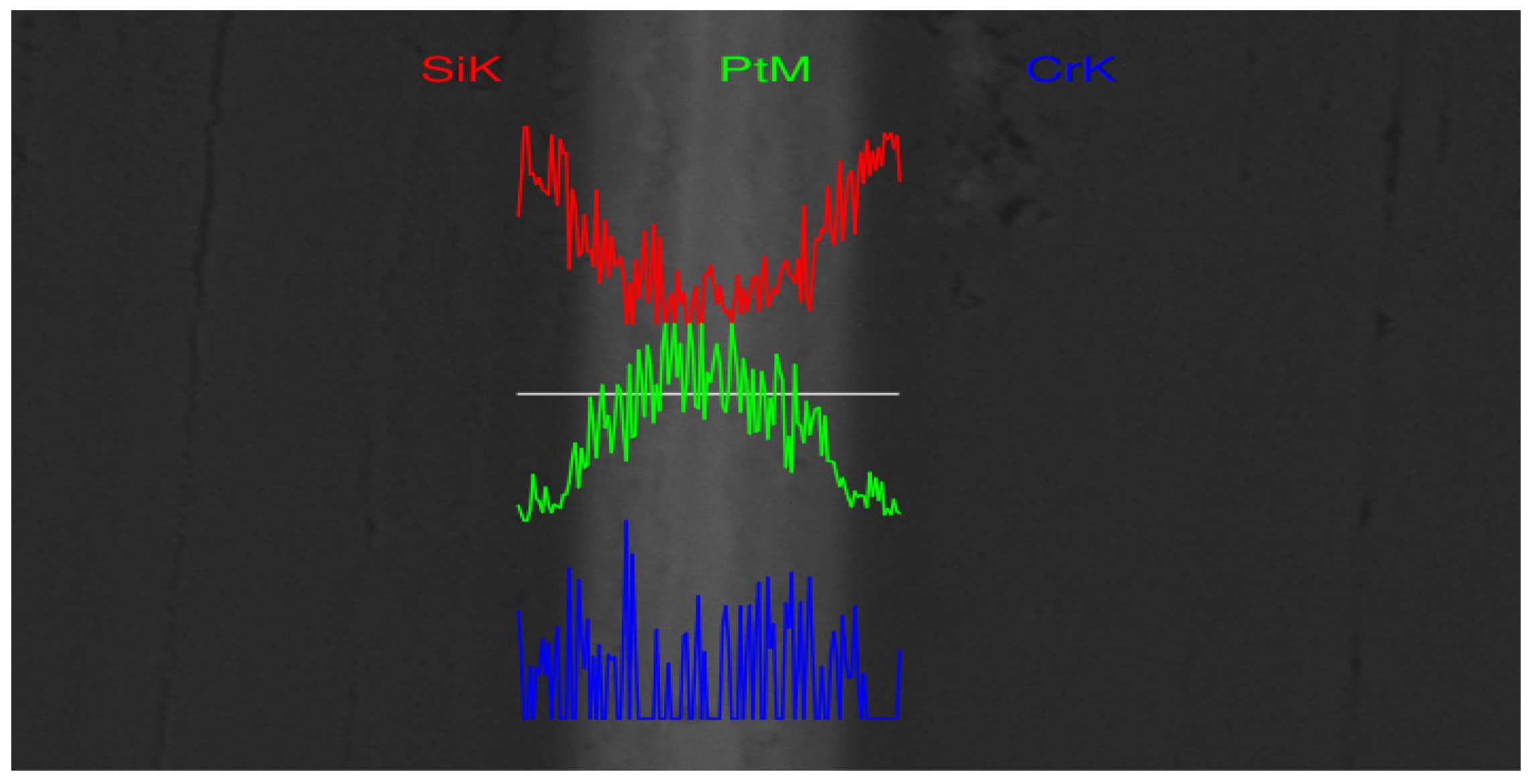


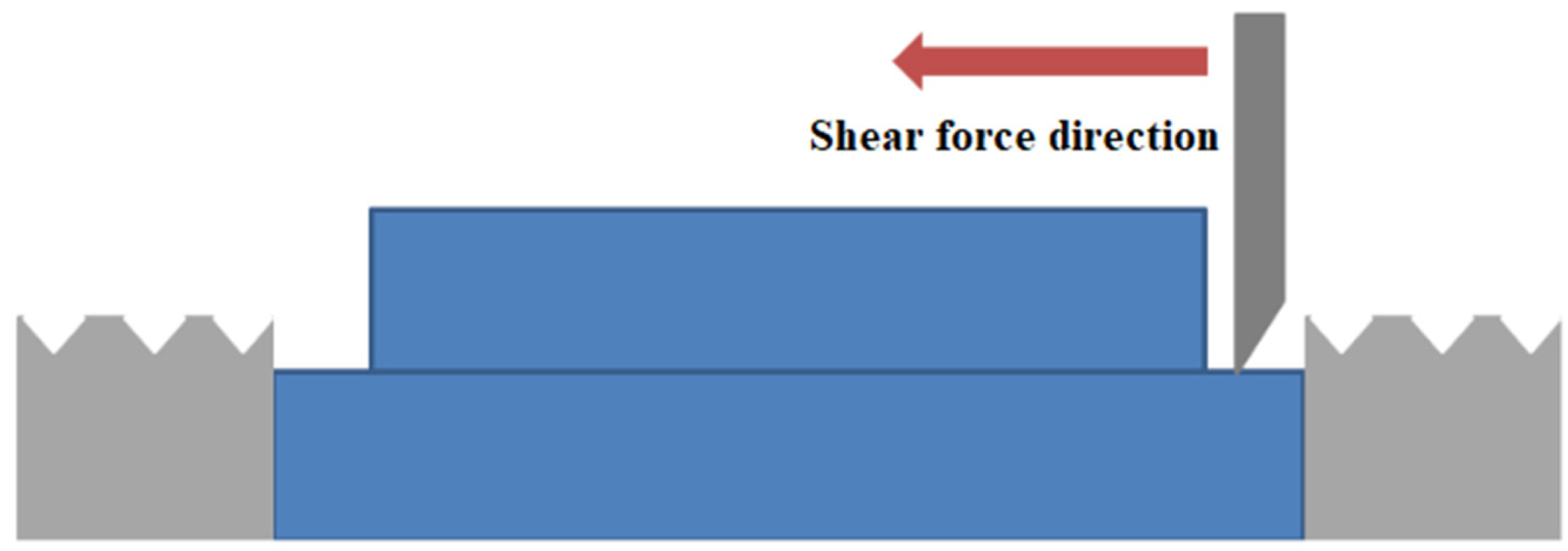
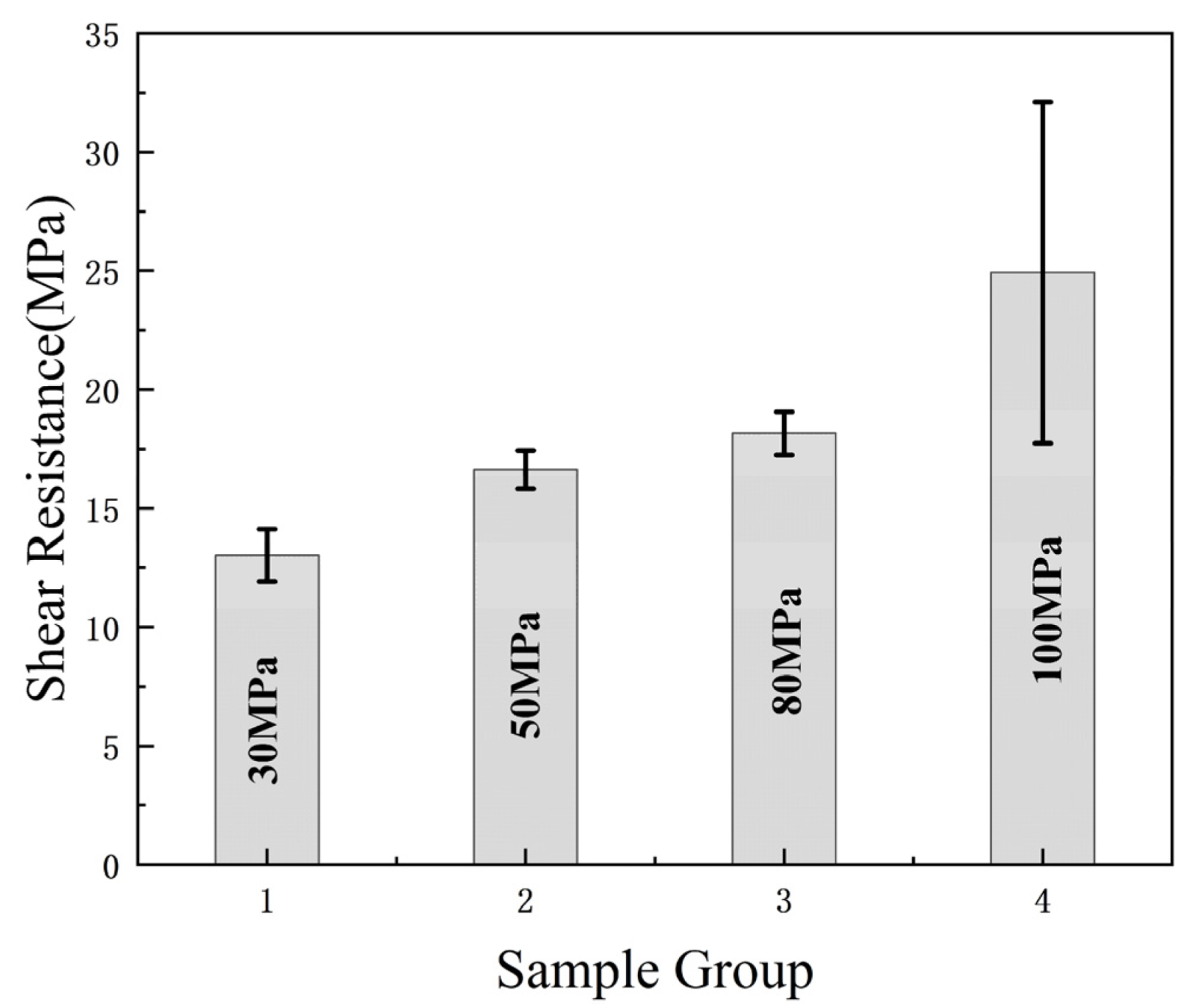


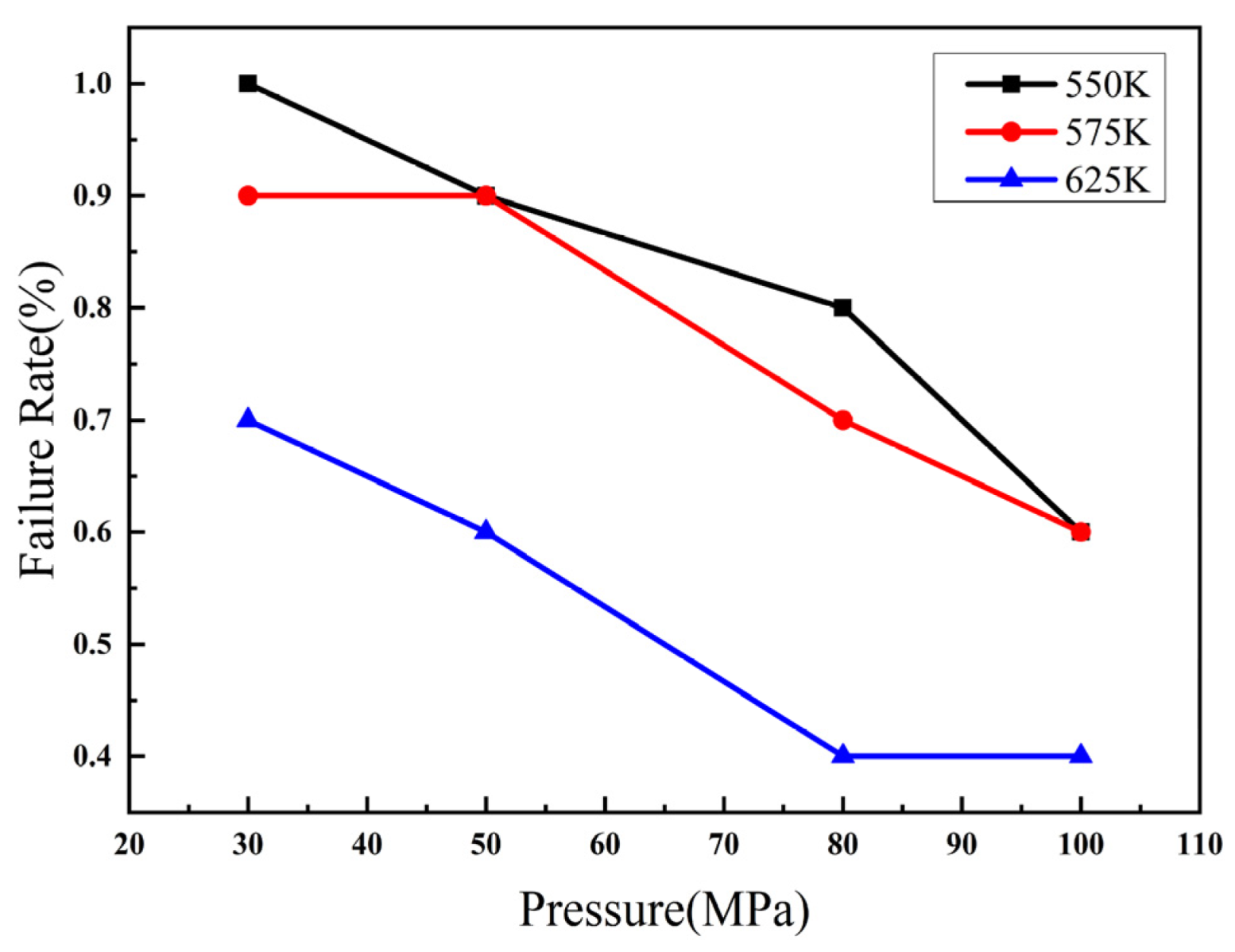
| Parameter | Force | Temperature | Time |
|---|---|---|---|
| Case1 | 165 N | 350 °C | 1200 s |
| Case2 | 275 N | 350 °C | 1200 s |
| Case3 | 440 N | 350 °C | 1200 s |
| Case4 | 550 N | 350 °C | 1200 s |
| Parameter | Condition | Minimum Leakage Rate | Maximum Leakage Rate | Average Leakage Rate |
|---|---|---|---|---|
| Group 1 | 30 MPa/165 N | 3.3 × 10–4 | 9.8 × 10–4 | 6.55 × 10–4 |
| Group 2 | 50 MPa/275 N | 3.3 × 10–5 | 5.9 × 10–4 | 3.115 × 10–4 |
| Group 3 | 80 MPa/550 N | 1.37 × 10–5 | 2.77 × 10–5 | 1.81 × 10–5 |
| Group 4 | 100 MPa/550 N | 1.29 × 10–5 | 1.83 × 10–5 | 1.48 × 10–5 |
Publisher’s Note: MDPI stays neutral with regard to jurisdictional claims in published maps and institutional affiliations. |
© 2022 by the authors. Licensee MDPI, Basel, Switzerland. This article is an open access article distributed under the terms and conditions of the Creative Commons Attribution (CC BY) license (https://creativecommons.org/licenses/by/4.0/).
Share and Cite
Liu, J.; Wang, J.; Li, M.; Zhang, H. High Quality Pt–Pt Metal Bonding for High Temperature Packaging. Micromachines 2022, 13, 1543. https://doi.org/10.3390/mi13091543
Liu J, Wang J, Li M, Zhang H. High Quality Pt–Pt Metal Bonding for High Temperature Packaging. Micromachines. 2022; 13(9):1543. https://doi.org/10.3390/mi13091543
Chicago/Turabian StyleLiu, Jiazheng, Junqiang Wang, Mengwei Li, and Haikun Zhang. 2022. "High Quality Pt–Pt Metal Bonding for High Temperature Packaging" Micromachines 13, no. 9: 1543. https://doi.org/10.3390/mi13091543
APA StyleLiu, J., Wang, J., Li, M., & Zhang, H. (2022). High Quality Pt–Pt Metal Bonding for High Temperature Packaging. Micromachines, 13(9), 1543. https://doi.org/10.3390/mi13091543






